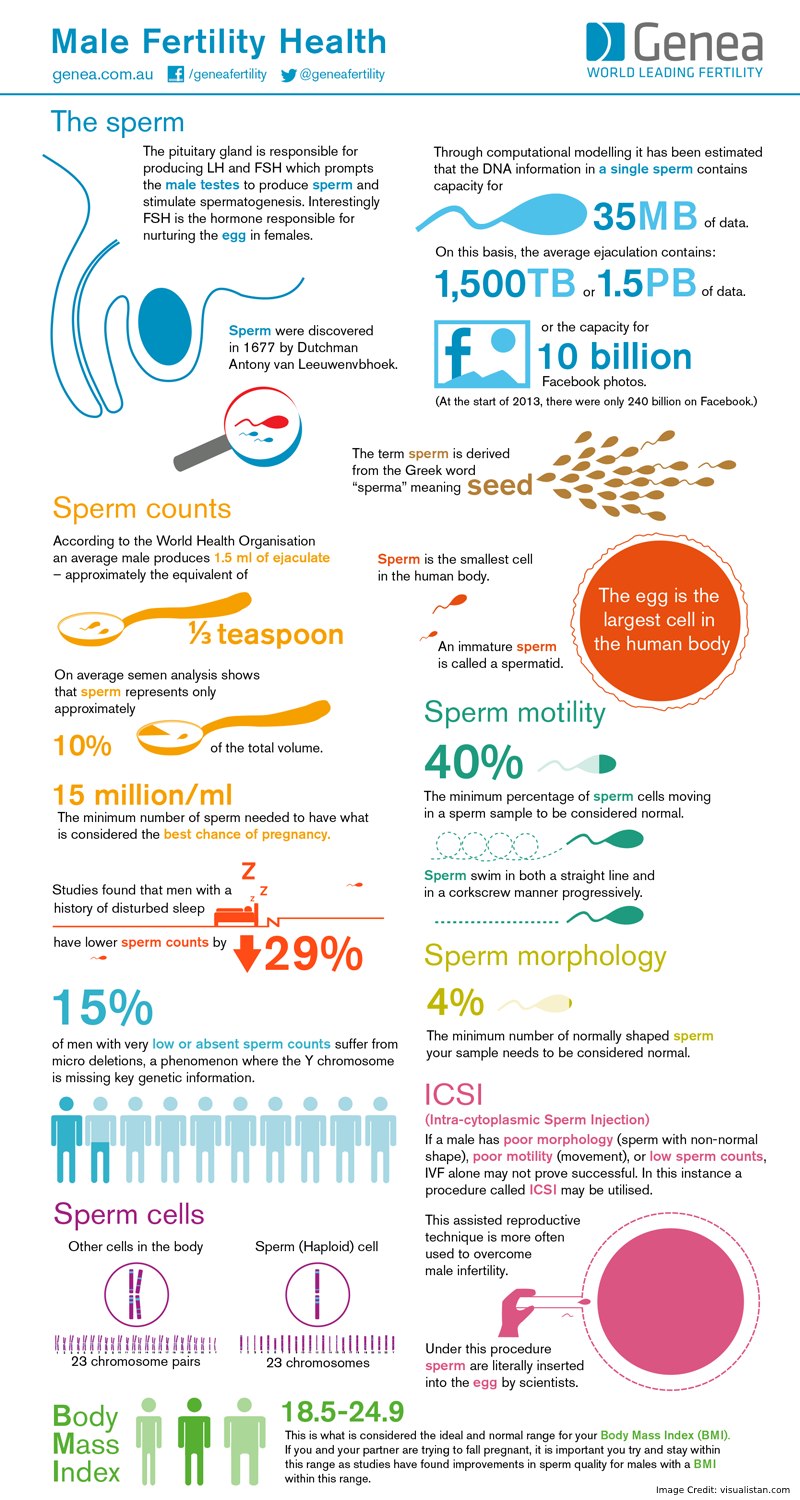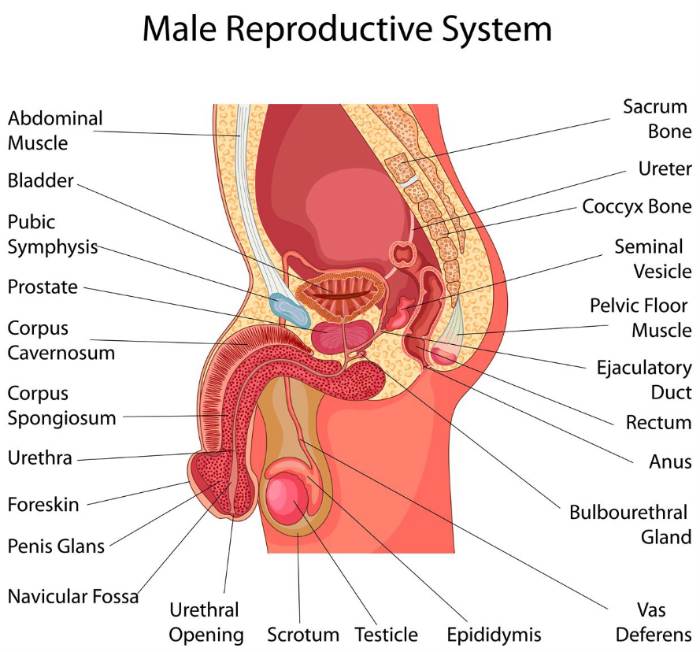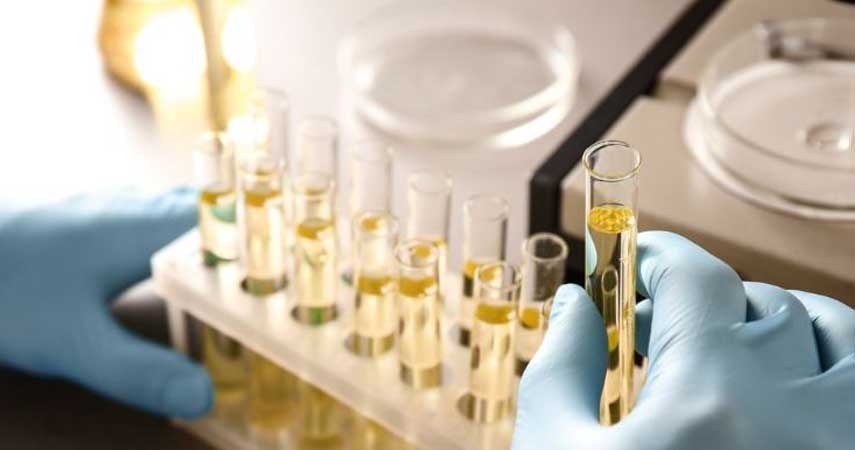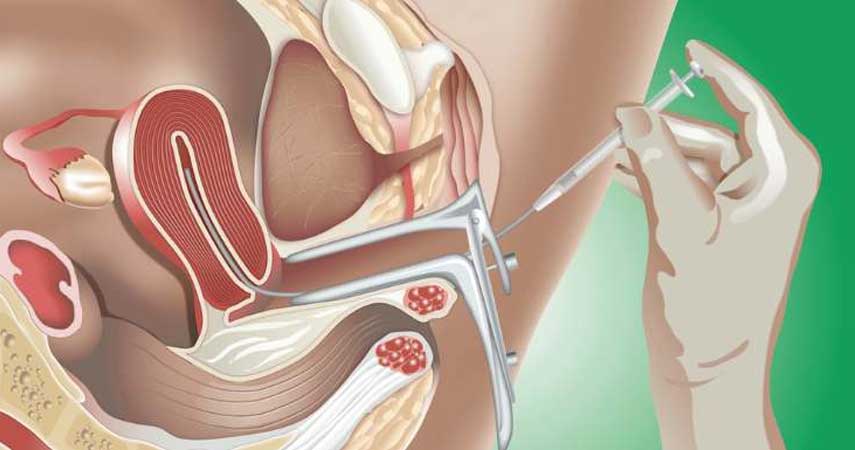In order to have a quality sex and marital life, it’s not only necessary to have a great sexual intercourse, but it’s also equally important for both male and female to be fertile.
At some point, the majority of couples desperately want to have a baby and their own family, but the infertile people won’t be able to have a family.
In case of men, infertility is an ability to cause a pregnancy, whereas, in case of women, infertility is an inability to be pregnant.
The case of infertility is very common in the United States. In fact, the study [1] shows that 1 in 6 American couples are dealing with infertility.
The statistics [2] show that around 10% of the women in the age group of 15-44 have difficulty in getting pregnant.
And, the other statistics [3] show that male infertility accounts for 30% of the total case of infertility. Now, the question is how Aspermia is different from the normal cases of infertility.
Aspermia is a totally different case. Aspermia is a disease that is associated with the male reproductive organ. This disease is a rare condition that is found in men, which is not as common as infertility and some other sexual disorders.
In the case of Aspermia, a person completely lacks semen while ejaculating. The case of Aspermia is different than that of Azoospermia, as this condition is a low level of sperm cells in semen.
The men who are diagnosed with aspermia are usually able to reach and experience orgasm, but there is a complete lack of semen during ejaculation.
This disorder is found among men due to two main reasons. The first reason is the complete lack of ejaculation and the next one is the ejaculation in the bladder (it’s also known as retrograde ejaculation).
The inability of men to ejaculate can be further divided into two categories. The first category is congenital anorgasmia, which is a primary lifelong condition, and the next one is secondary anorgasmia, which is an acquired condition.

How Are Sperms Produced In Normal Fertile Men?
In case of a normal fertile man, the sperms are commonly produced in the testes. The sperms that are formed in the testes move through the vas deferens and it comes out via the epididymis.
The role of prostate glands comes into play when the sperms get mixed with secretions from the seminal vesicle. However, with increasing age some men tend of be affected by problems in their prostate glands. Men who suffer from such problems should include prostate health supplements in their daily diet.
After this process, the prostate itself along with Cowper’s gland work together for the formation of semen, and this semen is released by men while ejaculating.
What Are The Causes Of Aspermia?
There is a possibility that men may suffer from aspermia due to some psychological problems, and there could also be some other causes that could lead to aspermia.
However, there are two major causes of aspermia in the majority of aspermia cases. The two major causes of aspermia are:
- The condition of retrograde ejaculation
- The condition of ejaculatory duct obstruction. For an instance, mechanical obstruction in a male’s testicles.
1. Retrograde Ejaculation
In the case of retrograde ejaculation, the ejaculation of semen is pushed backward instead of forward, which is what usually happens. The condition of retrograde ejaculation is caused due to the failure of urinary bladder, neck closure, which forces the ejaculated semen to be pushed backward.
The aspermia due to retrograde ejaculation usually occurs due to following reasons:
- The surgery associated with the testicles or prostate may lead to retrograde ejaculation.
- Some diseases can damage the nerves of a person, and damaged nerves can result in retrograde ejaculation.
- The retrograde ejaculation could be linked to any other medical conditions, such as diabetes, multiple sclerosis, and spinal cord injury.
- The regular consumption of medications like tamsulosin, which is prescribed by a doctor for the treatment of prostate tumors, antidepressants, antipsychotic drugs, and antihypertensive drugs have plenty of side effects, and it may also result in retrograde ejaculation.
2. Ejaculatory Duct Obstruction

An ejaculatory duct obstruction is another major cause of aspermia. This is a condition where one or both ejaculatory ducts are obstructed.
When both the ejaculatory ducts are obstructed, it is known as a complete ejaculatory duct obstruction, whereas when only one ejaculatory duct is obstructed, it’s known as a partial ejaculatory duct obstruction.
The evaluation and indication of a partial ejaculatory duct obstruction are somewhat controversial. Here are some of the reasons for ejaculatory duct obstruction:
- The congenital cysts that are found in the ejaculatory ducts can obstruction ejaculatory ducts.
- The inflammation of the prostate gland and the prostate gland tuberculosis are some of the conditions that can obstruct the ejaculatory ducts of a person.
- The sexually transmitted disease, such as Chlamydia can also cause ejaculatory duct obstruction.
These are the two major causes of aspermia.
What Are The Diseases Associated With Aspermia?
Here are some of the diseases that are associated with the condition of aspermia.
- Hypospermia
- Azoospermia
- Oligozoospermia
- Retrograde ejaculation
- Ejaculatory duct obstruction
What Are The Risk Factors Associated With Aspermia?
There are some risk factors that are associated with Aspermia, and they are as follows:

- Testicular Trauma
- Prostatitis, which is an inflammation of the prostate gland
- General inflammatory process
- Congenital diseases
- Multiple sclerosis[4]
- Diabetes
- Prostate cancer treatment
- Sexually Transmitted Diseases
- Spinal cord injuries
- Parkinson disease (it is a long-term neurodegenerative disorder, which is one of the most common brain disorders)
- Partial urethra blockade
What Are The Symptoms Of Aspermia?
There are some diseases in which the symptoms are unclear. However, it’s not with the case of aspermia. There are only a few symptoms of aspermia, and they are quite apparent and visible, which makes it easier to know if the person is struggling with aspermia or not.
Here are some of the common and visible symptoms of aspermia:
- There is a complete lack of semen during ejaculation, which is also called a dry orgasm.
- Men can observe hazy urine after reaching at the point of the peak during an intercourse. This is caused because of semen leakage, most possibly due to an obstruction.
- There is a pain in the pelvic region after an ejaculation.
- There could be a condition of oligospermia, which is a condition where a negligible amount of semen is released.
- A man is not able to provide enough sperm into a vagina, which means he is not able to make women pregnant.
What Is The Impact Of Aspermia On The Fertility Of Men?

The outflow of semen is blocked during ejaculation because of the epididymal or a mechanical ejaculatory ducts obstruction.
In the case of the retrograde ejaculation, the ejaculated semen flows backward into the urinary bladder instead of forwarding (which is in the case of normal ejaculation).
Due to these kinds of abnormal ejaculation processes, the ejaculation while having a sexual intercourse with your partner is not possible.
When there is no ejaculated semen, there is no chance for the sperm to reach the egg in the uterus. This makes it almost impossible to reproduce naturally without surgery, as the obstruction must be removed with the help of surgery.
How Is Aspermia Diagnosed?
This condition is diagnosed in various ways, and it depends on the factors that are responsible for the condition. After having a talk with a patient, a doctor may suggest the patients go through various tests to confirm aspermia.
The results from the tests will help the doctor to suggest the proper treatment procedures to the patient.
Here are the methods used by the doctor to diagnose aspermia.
Check Out The Patient’s Medical History
The elaborative medical history of the patient will be asked by a doctor. Like in the case of many other diseases, the condition of aspermia could also be triggered by the past medical condition of a patient.
After taking a look at an elaborative medical history of a patient, the doctor will get a clear picture of the patient’s condition underlying the disorder.
Physical Examinations
After checking out the elaborative medical history of a patient, the doctor now asks the patient to do some physical examinations. The genitalia and testicles are evaluated with the help of the physical examinations.
The results of the physical examinations will help the doctor to ensure if all the important parts of the male reproductive system, such as the vas deferens and tubules are present or not.
Post-Ejaculate Urine Test

The post-ejaculate urine test is required to check out the presence of semen in the urine. The complete lack of semen is called aspermia. And, this condition could be caused due to the condition of retrograde ejaculation.
Testing out the urine of a patient after ejaculation allows the doctor to check if the condition of aspermia is caused due to the condition of retrograde ejaculation or not.
Blood Tests
The presence and the level of hormones can be determined with the help of blood tests. In the case of a diagnosis of aspermia, the doctor asks the patients to go through blood tests to check out the level of testosterone and follicle-stimulating hormone in their body.
The testosterone is a major male sex hormone, and the lower level of testosterone in a man’s body will not only lead to a reduced sex drive but also a lower amount of semen.
Radioimmunoassay (RIA)
This test is also the test to check out the levels of various sex hormones in the blood of the patient. The patients with a condition of aspermia usually have a lower level of follicle-stimulating hormone and testosterone hormone in their bodies.
And, the level of luteinizing hormone is higher than usual because of an increased production of this hormone in the body.
Wright-Giemsa Stain
It’s very important for a doctor to be informed about sperm morphology of the patient, and this is what this test is all about. This test is done to check the sperm morphology of a patient to carry forward the diagnosis process.
Microscopic Examination Of Sperms
The sperms are evaluated very closely with this test. And, this test is a very important part of an overall diagnostic process of aspermia.
Chemical Analysis Of A Semen
There are various chemicals that are found in the semen, and it’s important for a doctor to know about them. With the help of this test, the doctor can know about the level of pH and fructose in the semen.
The test result usually shows the decrease in the fructose concentration in the semen and there is also a lower level of pH in the patients who are diagnosed with aspermia.
Imaging Studies
The final part of the diagnosis of aspermia is imaging studies. The imaging studies include two types of tests, and they are magnetic resonance imaging and a transrectal ultrasound. There is a possibility of damage to the seminal vesicles and prostate gland among aspermia patients.
This test will help a doctor to see if there are any sorts of damage to the prostate gland and seminal vesicles of the patient.
These are the series of tests that are required for the proper diagnosis of the patient. After getting and evaluating the results of these tests, the doctor will be able to suggest a proper treatment procedure for the patient. In the next section of this article, we will take look at various treatment methods for aspermia.
What Are The Treatment Methods For Aspermia?

There are various causes of aspermia, and the treatment methods suggested by the doctor have one aim, and i.e. to eradicate the causes of aspermia.
The doctor at first opts for conservative therapy, but there are cases when this therapy may not work out for the patient. In case of the failure of conservative therapy, the operation may be suggested by the doctor.
There could be a case where the condition of aspermia may be caused due to some kinds of medications. In this case, those specific medications must be stopped.
Here Are Some Of The Common Treatment Methods For Aspermia:
1.Oral Therapy
The first method of the treatment for aspermia is an oral therapy. This method of treatment focuses on constricting the bladder neck during ejaculation, and this allows the smooth flow of semen into the urethra.
The consumption of the prescribed drugs will help in the recovery of a damaged nerve that is leading to aspermia.
Here is the list of medications that are prescribed by the doctor.
- Pseudoephedrine (Sudafed Plus): The patient is required to consume 120 mg of this medicine before ejaculation.
- Imipramine (Tofranil): 20-50 mg is the daily dose of this medicine, and this medicine must be consumed for the span of one month.
- Phenylephrine (Neo-Synephrine): This is a nasal spray, which needs to be sprayed 1-2 hours before ejaculation.
- Ephedrine (Ventolin): This medicine is taken before 1-2 hours of ejaculation.
- Inhalers (Apulent and Proventil): This medicine is consumed 1-2 hours prior to ejaculation.
- Chlorpheniramine (Atarax): The daily dose of this medicine is 2 tablets, and it must be taken regularly for 1 month.
- Bromopheniramine (Vistaril): It is also required for a patient to consume 2 tablets of this medicine for the span of 1 month.
2. Assisted Reproduction

This method of treatment is suggested for those couples who are longing to have a baby. This procedure can be achieved via several ways, and they are:
Intrauterine insemination
The semen that is produced is first collected in the urinary bladder of a male. The collected semen is then introduced to the female’s uterus. The success rate of intrauterine insemination is very high.
In Virto fertilization
There are cases among men with aspermia where their sperm motility is very low followed by a very low sperm count. In such cases, this procedure of treatment is recommended by the doctor to the patient to make it possible for couples to have a baby.
Bladder Sperm Harvest
The doctor at first prescribes the necessary medicine to the patient for increasing the level of pH. If the medicine fails to increase the level of pH in the patient, then this procedure is suggested by the doctor.
3.Surgery
If all the above methods of treatment fail to cure the person that is struggling with aspermia, then the surgery is suggested by the doctor. There are two types of surgery that is used for the treatment of aspermia. Here are the two types of surgeries.
Transurethral Resection Of The Ejaculatory Duct (TURED)
The people who are struggling with aspermia due to ejaculatory duct obstruction are suggested with this method of surgery. It’s an invasive procedure that leads to a successful pregnancy; however, there are numerous complications associated with this type of surgery.
There is a chance of damage to the valves that are found in the orifice of the ejaculatory ducts. And, this damage can further lead to the urine to retreat inside the seminal vesicles. This complication can be quite a serious problem for men.
Recanalization Of Ejaculatory Ducts
This is another type of surgery method, which is suggested by the doctor to treat the aspermia that is caused by ejaculatory duct obstruction.
The transurethral or transrectal insertion of balloon catheter is done in this type of surgery. The dilation of an obstructed ejaculatory duct is done with the help of balloon catheter in this surgery.
The dilation of an obstructed ejaculatory duct will allow semen to flow freely. However, the doctors are not sure about its rate of success, and there are some complications associated with this type of surgery.
Are There Any Ways To Prevent Aspermia?

The series of urinary tract inflammation is one of the major causes of ejaculatory or epididymal obstruction. One should try to minimize the infection with the use of an antibiotic treatment whenever the infection is seen. This could well reduce the risk of aspermia.
However, there are no specific ways to prevent ejaculatory duct obstruction or retrograde ejaculation. The person can reduce the risk of various sexual disorders by adopting a healthy lifestyle.
This is the only thing one can suggest to improve their sexual health and to prevent themselves from different types of sexual disorders.
What Are The Complications Associated With Aspermia?
Like most of the other serious diseases, an early detection of aspermia will not cause any serious complications. The early detection and treatment of the condition can help in avoiding major complications associated with Aspermia.
However, the people can have further complications in the case of late detection of Aspermia. The sexual sensation of men could diminish if this condition is not treated at a right time. And, the most common complication of late diagnosis and treatment of aspermia is male infertility.
However, there is a method for men being a father despite their infertility. The semen ejaculated by the men could be collected and stored in a sperm bank. That stored semen can be used in the future when needed, and it can assist men in reproduction.
Read More: Know 7 Hidden Characteristics Of Sexually Healthy Adults
Conclusion
There are many stumbling blocks to a healthy marriage life, and the problems related to reproductive organs are definitely one of them.
The problem, such as aspermia is not only a sole problem of men, but it also badly affects their partners. It’s because the lives of both husband and wife are connected with a marriage.
The good news, however, is that there are ways to deal with many adverse conditions related to sexual health in today’s world of science and technology.
But again, many people hesitate to talk about sex and sexual problems openly due to many reasons despite having problems with their sex life. The people struggling with any kinds of sexual disorders or infertility problems must consult the doctor without wasting much time.
And, do modify your lifestyle and take whatever steps are necessary to enhance your reproductive health.
Feature Image: Shutterstock.com
In-Post Image: Shutterstock.com & www.visualistan.com









 This article changed my life!
This article changed my life! This article was informative.
This article was informative. I have a medical question.
I have a medical question.
 This article contains incorrect information.
This article contains incorrect information. This article doesn’t have the information I’m looking for.
This article doesn’t have the information I’m looking for.